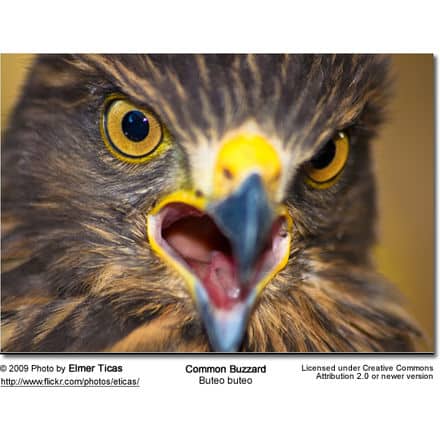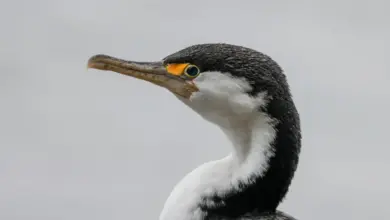Broad-billed Motmots
Broad-billed Motmots (Electron platyrhynchum)
Broad-billed Motmots Distribution / Habitat
 Broad-billed Motmots are found in the following Central American countries:
Broad-billed Motmots are found in the following Central American countries:
Colombia, Ecuador, Peru, Bolivia and Brazil
They are associated with humid lowland forests and heavily degraded former forest, up to an elevation of about 3,600 feet or 1,100 meters ASL. They generally remain in the forest’s mid levels, favoring relatively open areas.
They are typically seen alone or in pairs.
Broad-billed Motmots Subspecies and Ranges:
- Broad-billed Motmot (nominate) (Electron platyrhynchum platyrhynchum – Leadbeater, 1829)
- Range: West of the Andes from western Colombia south to El Oro – Ecuador’s southernmost coastal provinces.
- Broad-billed Motmot (ssp. minus) (Electron platyrhynchum minus – Hartert, 1898)
- Range: Eastern Honduras south through eastern Panama into the lower Cauca Valley of northern Colombia.
- Broad-billed Motmot (ssp. colombianum) (Electron platyrhynchum colombianum – Meyer de Schauensee, 1950)
- Range: North of the Andes in the moist lowland areas of northern Colombia to the eastern bank of the Magdalena river and south to Boyacá.
- Plain-tailed Broad-billed Motmot (Electron platyrhynchum pyrrholaemum – Berlepsch & Stolzmann, 1902)
- ID: Lacks the tail rackets of the other Motmot species.
- Range: East of the Andes in eastern Colombia, where they are found in southern Meta, Caquetá; their range stretches into eastern Ecuador, eastern Peru and northern Bolivia (around the cities of Cochabamba and Santa Cruz).
- Broad-billed Motmot (ssp. orienticola) (Electron platyrhynchum orienticola – Oberholser, 1920)
- Range: Upper Amazonian in Western Brazil, in the Rio Purus (Purus River) region in the state of Acre
- Broad-billed Motmot (ssp. chlorophrys) (Electron platyrhynchum chlorophrys – Ribeiro, 1931)
- Range: Northern Brazil in eastern Amazonas, Pará, Mato Grosso and northern Goiás.
Broad-billed Motmots Description
Size
- Smallish Motmot
- Average Length: 31 – 39 cm
- Average Weight: 56 – 66 g
Plumage Details / Adults
Other Physical Details / Adults
- Head appears large
- Tail moderately graduated
- Bill very broad, flattened, with pronounced culmen that forms a distinct ridge along the length of the bill.
Juvenile Description
- Immature birds lack the tail rackets, black chest spot and are generally paler plumaged than the adults.
Similar Species
- Their range overlaps with the nearly identical Rufous Motmot in Honduras south to Peru and Bolivia and east to northwestern Brazil. The Broad-billed Motmot can be differentiated by its smaller size, blue-green chin and large chest spot.
Diet / Feeding
The diet of the Broadbilled Motmots consists of …
- Animal foods, such as larval and adult insects (including beetles, crickets, grasshoppers, katydids, roaches and wasps), arachnids (including spiders, scorpions and whip scorpions), lizards, snakes, fish, crabs and small frogs. Animal prey is beaten on a branch or other substrate before consuming.
- Fruits and vegetation: Various fruits, berries and seeds.
Breeding / Nesting
The breeding season varies by location, but most breeding occurs between February and May. They nest in burrows that both parents dig and/or refurbish. An average clutch generally consist of 3 – 5 eggs.
Calls / Vocalizations / Sounds / Movies
Their vocalizations are described as short, nasal groans, given intermittently.
Alternate (Global) Names
Chinese: ???? … Czech: Momot širokozobý / šírozobý … Danish: Brednæbbet Motmot … Dutch: Breedsnavelmomot … Estonian: selvamotmot … Finnish: Leveänokkamomotti … French: Motmot à bec large … German: Plattschnabelmotmot … Hungarian: laposcs?r? motmot … Italian: Motmot beccolargo … Japanese: hirohashihachikuimodoki … Norwegian: Brednebbmotmot … Polish: Pilodziób szerokodzioby … Portuguese: goiás, udo / juruva-de-bico-largo … Russian: ?? … Slovak: momot širokozobý .. Spanish: Barranquero Piquigrueso, Burgo de Pico Ancho, Guardabarranco Canelo Menor, Momoto Picoancho / piquiancho, Taragón pico ancho … Swedish: Brednäbbad motmot





